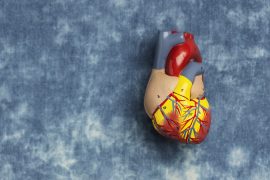Undergoing a stent implant is daunting for most people, but having information at hand can demystify the process and make the situation a tiny bit less scary. While most of your questions can and should be answered by your cardiologist, here are a few things you should know about before getting a stent.



What is a stent made of?
After all, in some situations like metal stents, it is likely to be a permanent part of your body going forward. To understand what stents are made of, let us quickly go over what stents are and what they do. As the cardiologist may have already informed you, our hearts are supplied blood by a network of arteries known as coronary arteries. With age and improper lifestyle, these arteries narrow and become filled with plaque deposits which can lead to Coronary Artery Disease, heart attacks, or even death. A coronary artery stent is simply a small, self-expanding, metallic mesh tube meant to be inserted inside the artery post a procedure referred to as balloon angioplasty. The stent keeps the artery wide open and the blood flow, continuous. Now as to their make, stents were traditionally made of a metallic or plastic mesh-like substance; however, stent-grafts are manufactured from fabric. These metallic stents are classically composed of medical-grade metal alloys including stainless steel, nitinol (nickel-titanium alloy), cobalt-chromium alloys (L605). However, these stents are fast falling out of favor. The most common type of stents in use these days, in fact, the ones that are the standard of care presently, are DES or Drug-Eluting Stents. These stents are not only made of polymers that dissolve in one’s blood after a few years but are also coated with drugs that reduce the risk of blockages.
Why is DES the standard of care?
The biggest advantage of DES is that they have thinner struts which can be as thin as < 100 μm, with some ultrathin struts reaching approximately 60 μm. This is vital as the thinner the strut, the lesser chance there is of restenosis or the recurrence of abnormal narrowing of an artery. Thinner struts have also been found to cause a lower inflammatory response which could potentially lead to clotting.
The other benefits of these stents are that they allow the artery to return to its natural shape and curvature, promote early healing, and allows for flexibility and normal dilation and constriction.



Advantages of stents
1) First and foremost, stents literally save lives by alleviating the damage that happened to one’s heart muscles during the heart attack. It does so by replenishing blood flow to one’s heart.
2) Immediately relieve/decrease symptoms of heart disease.
3) Reduce the risk of heart attack or stroke in the future.
4) Getting a stent placement may diminish the need to undergo a CABG (Coronary Artery Bypass Grafting).
5) Stenting is not only comparatively much less invasive versus CABG it also boasts of a much shorter recovery period.
Disadvantages of stents
1) One can get an allergic reaction from one’s stent
2) Angioplasty can result in hemorrhage of a blood vessel or even heart damage, or arrhythmia.
3) In rare cases, complications such as heart attack, stroke or renal failure can also occur.
4) Post-stenting scarring may occur that may require another procedure to remove it.
5) There is a risk of further blood clot formation; however, the cardiologist will already have you on blood thinners for prevention.
6) Stenting is not a cure for coronary artery disease. One needs to be vigilant about one’s diet and exercise while managing the contributing risk factors for coronary artery disease such as hypertension, higher body weight, diabetes, or high cholesterol.
So there you have it, a short primer on stents, how they are made and what you should be aware of while getting them implanted. Hope it has been of help!




